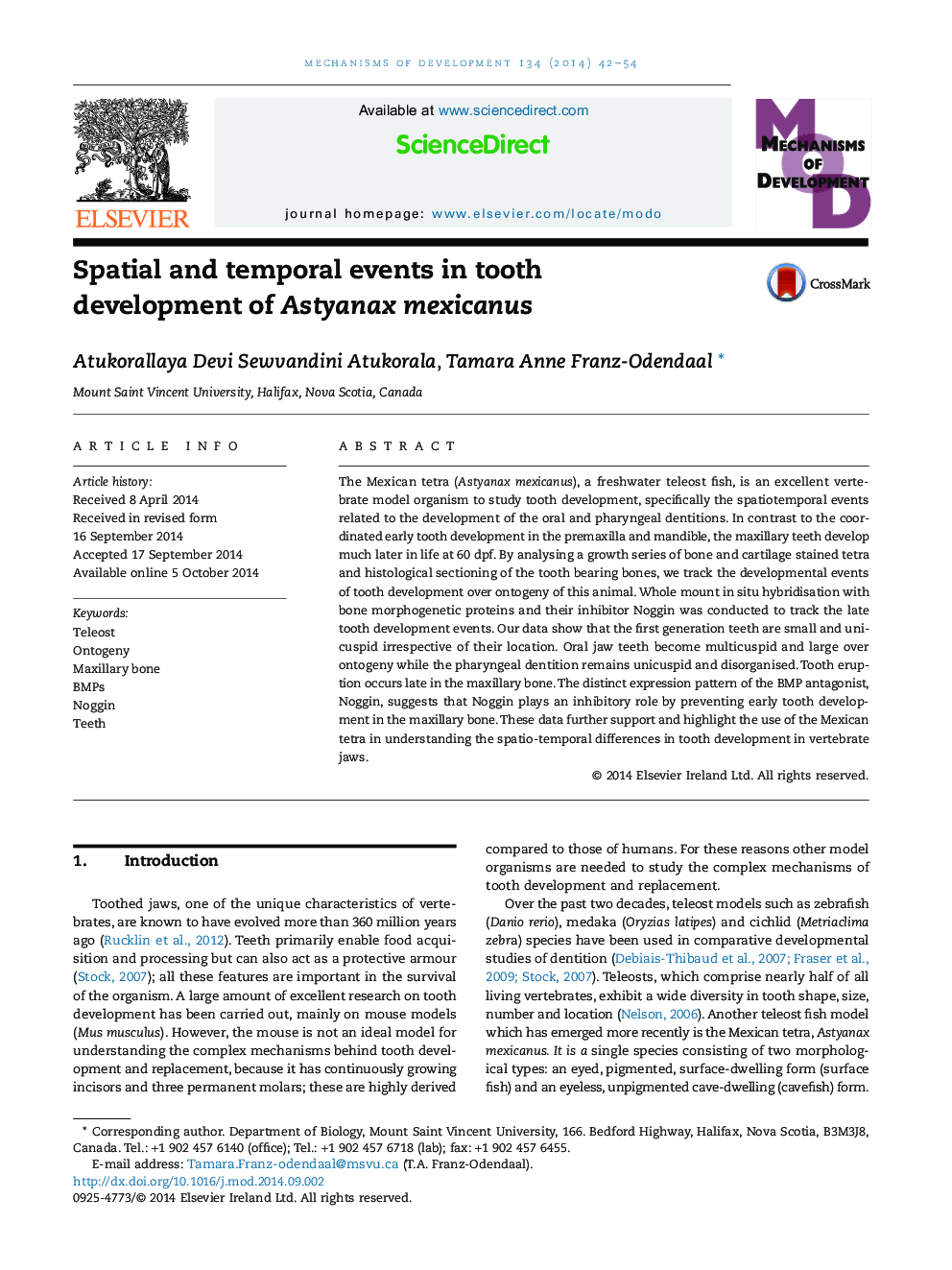| Article ID | Journal | Published Year | Pages | File Type |
|---|---|---|---|---|
| 8476040 | Mechanisms of Development | 2014 | 13 Pages |
Abstract
The Mexican tetra (Astyanax mexicanus), a freshwater teleost fish, is an excellent vertebrate model organism to study tooth development, specifically the spatiotemporal events related to the development of the oral and pharyngeal dentitions. In contrast to the coordinated early tooth development in the premaxilla and mandible, the maxillary teeth develop much later in life at 60âdpf. By analysing a growth series of bone and cartilage stained tetra and histological sectioning of the tooth bearing bones, we track the developmental events of tooth development over ontogeny of this animal. Whole mount in situ hybridisation with bone morphogenetic proteins and their inhibitor Noggin was conducted to track the late tooth development events. Our data show that the first generation teeth are small and unicuspid irrespective of their location. Oral jaw teeth become multicuspid and large over ontogeny while the pharyngeal dentition remains unicuspid and disorganised. Tooth eruption occurs late in the maxillary bone. The distinct expression pattern of the BMP antagonist, Noggin, suggests that Noggin plays an inhibitory role by preventing early tooth development in the maxillary bone. These data further support and highlight the use of the Mexican tetra in understanding the spatio-temporal differences in tooth development in vertebrate jaws.
Related Topics
Life Sciences
Biochemistry, Genetics and Molecular Biology
Cell Biology
Authors
Atukorallaya Devi Sewvandini Atukorala, Tamara Anne Franz-Odendaal,
